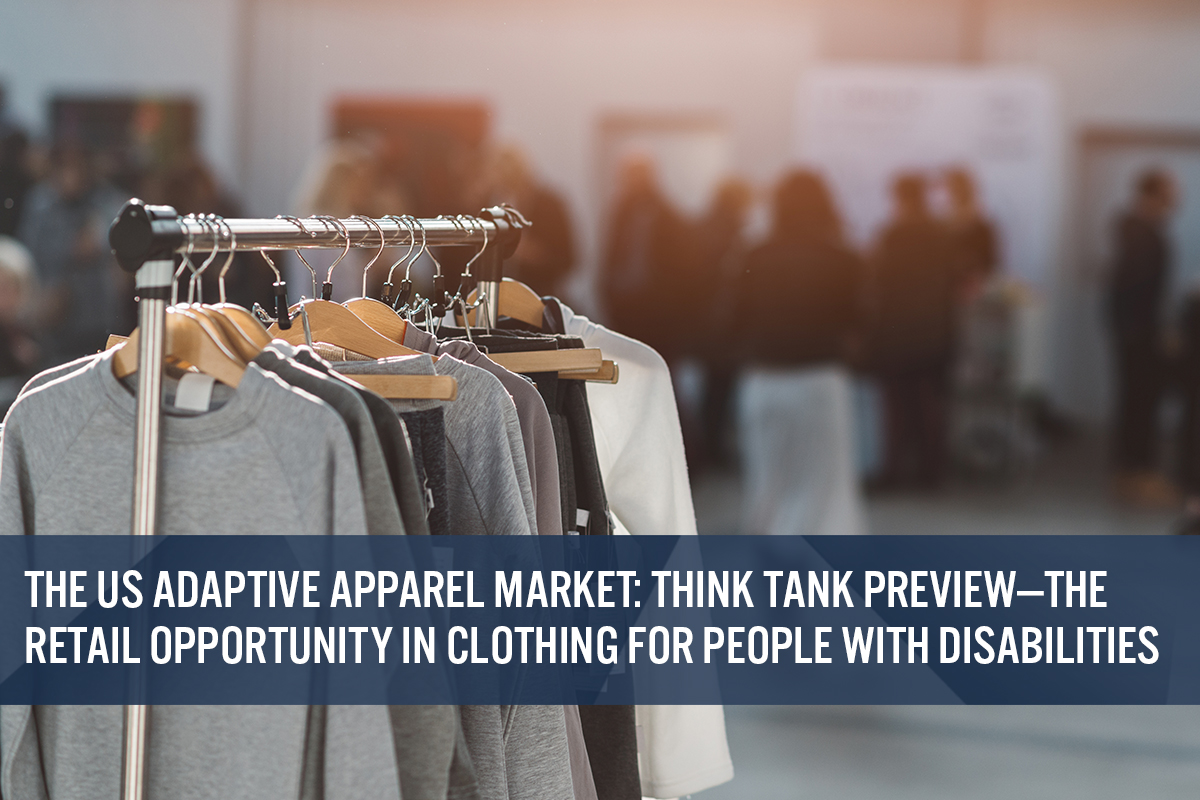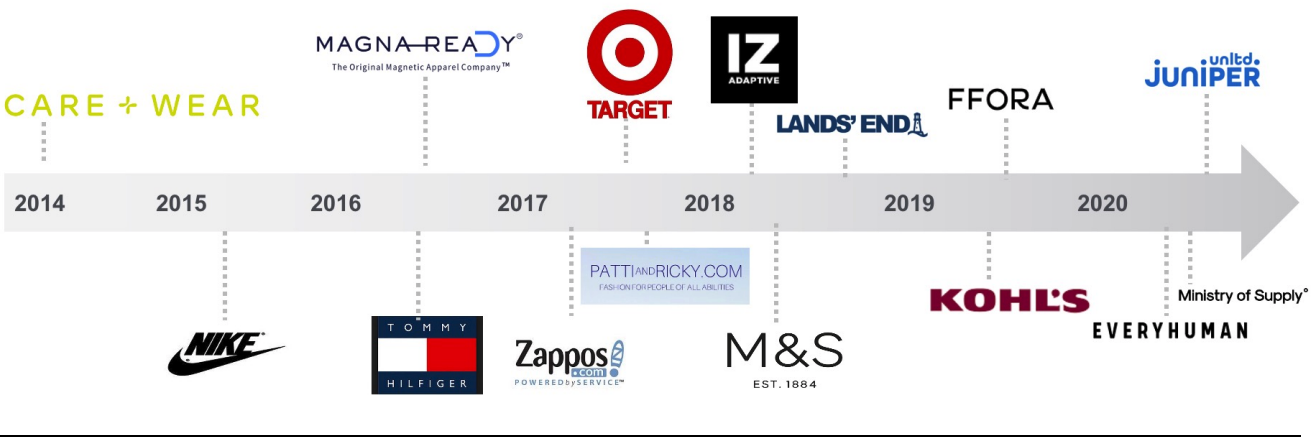
Nitheesh NH
This report is a preview to our Think Tank: The US Adaptive Apparel Market. The Coresight Research Think Tank series delves into the trends and segments that we have identified as key for 2021 and beyond. We provide a definitive overview of each topic and its impact on retail.
Adaptive apparel refers to clothing and footwear designed to meet the needs of individuals with disabilities and conditions. Exploring the US market, our Think Tank will provide a detail review of the adaptive consumer, average spending and potential market size, as well as retailers and brands in the adaptive space, recent innovations and catalysts for growth.
In this preview report, we present highlights from the Think Tank. Click here to read the full report.
 Source: US Census Bureau[/caption]
The Adaptive Apparel Landscape: Major Brands and Retailers Are Entering the Space
Over the past five years, brands and retailers have been increasingly recognizing the need for adaptive clothing and footwear. We are seeing developments across three key areas in the US competitive landscape:
Source: US Census Bureau[/caption]
The Adaptive Apparel Landscape: Major Brands and Retailers Are Entering the Space
Over the past five years, brands and retailers have been increasingly recognizing the need for adaptive clothing and footwear. We are seeing developments across three key areas in the US competitive landscape:
 Source: Coresight Research[/caption]
Technical Innovation, Brand Partnerships, Community Building and Social Media
In 2020, apparel brands steadily pushed the adaptive market forward, each in unique ways that are helping to drive awareness of the market while targeting different consumer groups:
Source: Coresight Research[/caption]
Technical Innovation, Brand Partnerships, Community Building and Social Media
In 2020, apparel brands steadily pushed the adaptive market forward, each in unique ways that are helping to drive awareness of the market while targeting different consumer groups:
US Adaptive Apparel Market: Think Tank Preview
Adaptive apparel refers to categories of clothing and footwear that serve needs not met by traditional fashion. Apparel specifically designed to help individuals with disabilities to dress and live with more independence is often called “stress-free” or “adaptive” clothing. The market caters to individuals with disabilities, individuals with mobility, sensory or motor processing difficulties, and individuals who are undergoing various medical treatments. The Adaptive Apparel Consumer: Ambulatory Difficulty Poses the Greatest Opportunity In 2019, 41.1 million individuals reported having a disability to the US Census Bureau, totaling 12.7% of the population. Each person could report more than one disability type. With 20.8 million Americans reporting ambulatory difficulty, this need poses the greatest opportunity in the adaptive apparel market. We show a breakdown of the disability types by age range in Figure 1. Figure 1. Americans with Disabilities: Disability Type by Age Range, 2019 (Mil.) [caption id="attachment_122362" align="aligncenter" width="700"] Source: US Census Bureau[/caption]
The Adaptive Apparel Landscape: Major Brands and Retailers Are Entering the Space
Over the past five years, brands and retailers have been increasingly recognizing the need for adaptive clothing and footwear. We are seeing developments across three key areas in the US competitive landscape:
Source: US Census Bureau[/caption]
The Adaptive Apparel Landscape: Major Brands and Retailers Are Entering the Space
Over the past five years, brands and retailers have been increasingly recognizing the need for adaptive clothing and footwear. We are seeing developments across three key areas in the US competitive landscape:
- Major retailers and brands are launching adaptive brand extensions—including Kohl’s, Target and Tommy Hilfiger.
- Independent brands are creating their own dedicated adaptive offerings.
- Adaptive e-commerce marketplaces are offering consumers an assortment of brands.
 Source: Coresight Research[/caption]
Technical Innovation, Brand Partnerships, Community Building and Social Media
In 2020, apparel brands steadily pushed the adaptive market forward, each in unique ways that are helping to drive awareness of the market while targeting different consumer groups:
Source: Coresight Research[/caption]
Technical Innovation, Brand Partnerships, Community Building and Social Media
In 2020, apparel brands steadily pushed the adaptive market forward, each in unique ways that are helping to drive awareness of the market while targeting different consumer groups:
- FFORA, a brand that offers solutions for wheelchair users, collaborated with Microsoft on a commercial for its series, “What Matters Most,” featuring FFORA CEO Lucy Jones using technology to design the brand’s products. Jones also collaborated in a follow-on 30-minute Live Nation x Twitch livestream with Microsoft in December, going live prior to a Tayla Parx concert for thousands of viewers.
- JuniperUnltd launched as an e-commerce adaptive marketplace with a community content hub. The community portal enables consumers to access personal stories and profiles, industry articles on adaptive living and design, employment opportunities, disability challenges, Instagram recommendations and events.
- Ministry of Supply launched the Kinetic Adaptive Pant for men and women, which was designed with input from user focus groups and research into how to minimize pressure while seated. A series of product prototypes was tested by world-class athletes, according to the company.
- Zappos Adaptive launched two initiatives, a Single & Different Size Shoes Program, and Ugg Universal, both of which focus on user-centric designs and involve partnership with major footwear brands.